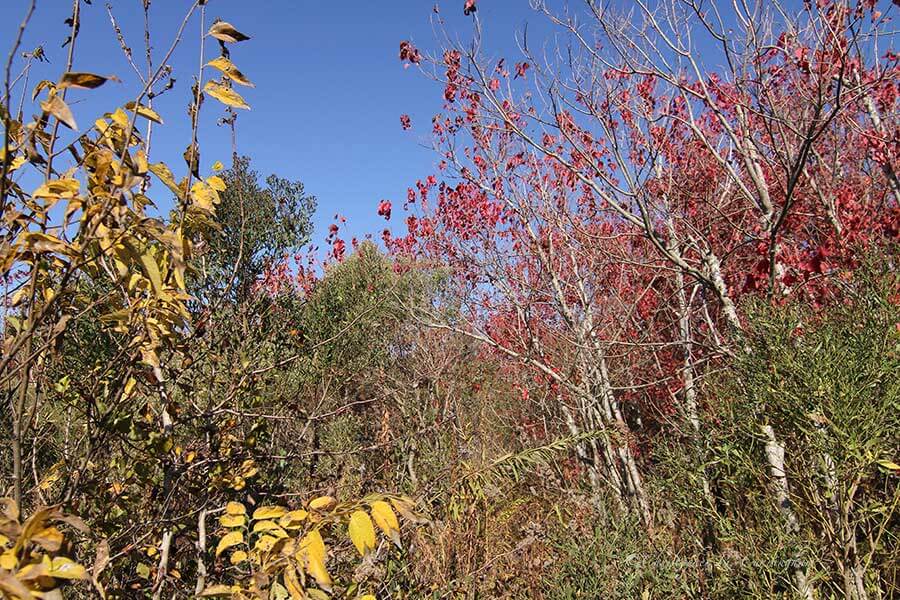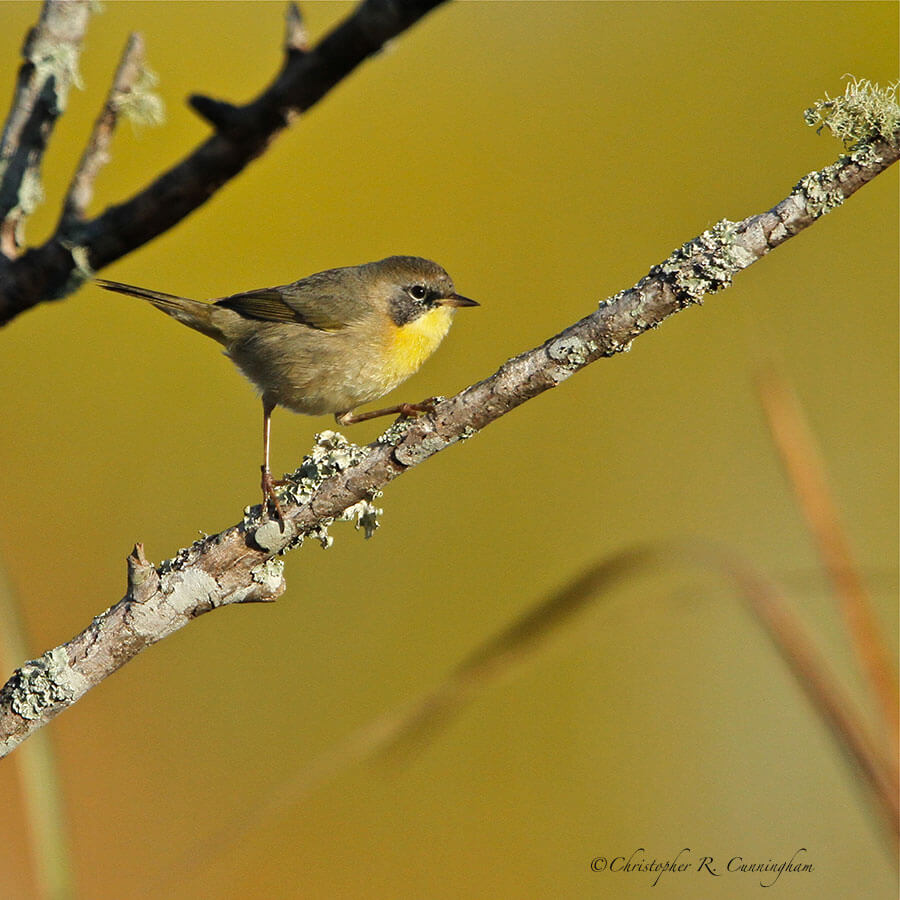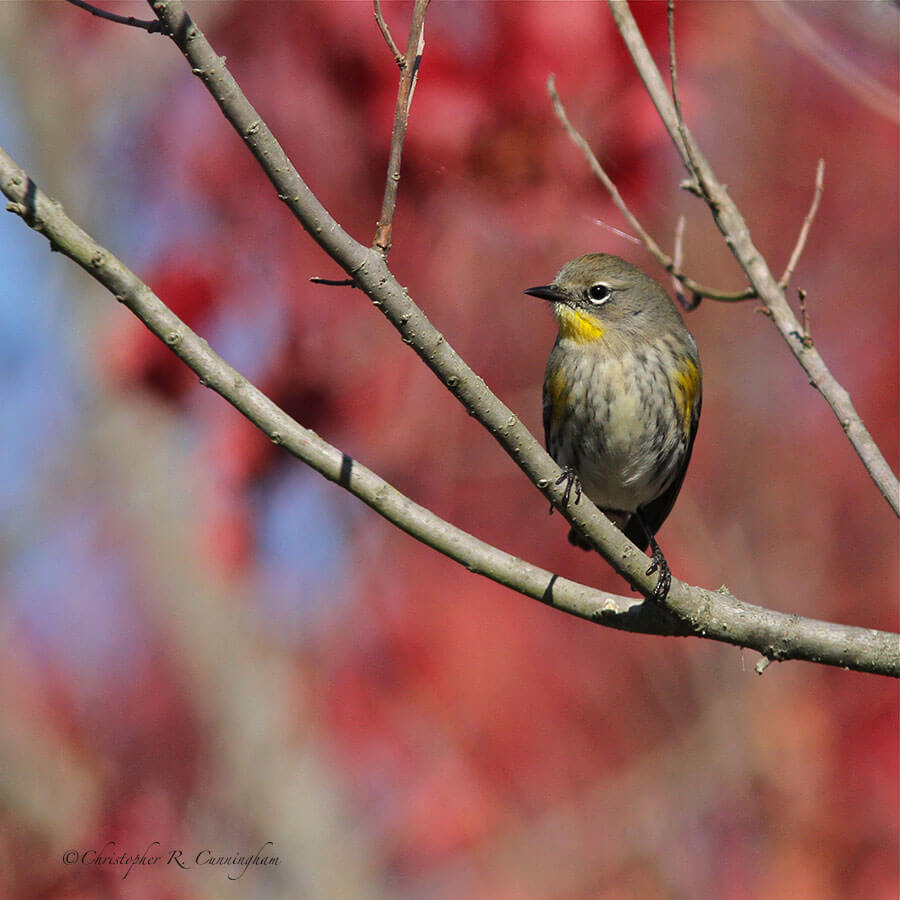
Fall is an incredible time to bird the Texas Gulf Coast: migrants are returning or passing through, the plants are changing colors, mornings are cool, and the bugs are on the way out–but not all the way out, lest our beloved insect-eaters keep moving! Some of the most exciting environments to bird at this time of year are the densely-tangled thickets near the numerous waterways of the region. We especially love to bird Brazos Bend State Park, Sabine Woods, and Anahuac NWR (both the Skillern and Main tracts) at this time of year. Thickets in these areas are challenging for photography most of the year, but in fall are literally hopping in places with insectivorous birds.
Fall shedding of leaves leads to an opening up of possibilities for photography: the dense (often frustrating) greenery of summer, sometimes making it impossible to photograph shy, secretive thicket species is slowly breaking up. Splashes of color now punctuate images, and the amber and reddish glow of autumnal mornings and evenings tint backgrounds.

The explosion of insect-eaters during the fall migration is a reminder that the mass migrations of birds are all about the flow of solar energy. As the supply of warm-weather prey dwindles in the northern latitudes the bug-eaters must move south in search of their (mostly) ectothermic prey. The Texas Gulf Coast stays warm enough throughout the winter to keep a supply of insects large enough to support a large population of flycatchers, especially Eastern Phoebes, that can be seen perched on branches over water or open grassy areas. They flit down, grab an insect and then return to their perch to dine. A spectacular sight to behold is a Phoebe grabbing a butterfly on the wing. Surprisingly, they ingest the whole insect, wings and all. One wonders how much nutritional value a butterfly wing has, though. Vermilion Flycatchers exhibit similar behavior in these thicket environments, but a discussion of these beautiful little birds must await Elisa’s next post!

© 2012 Christopher R. Cunningham. All rights reserved. No text or images may be duplicated or distributed without permission.